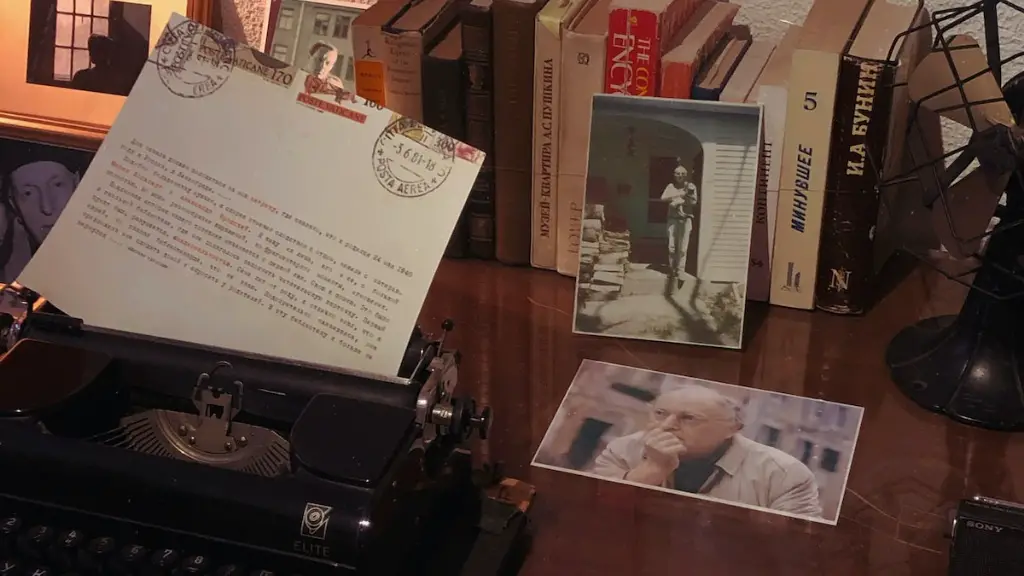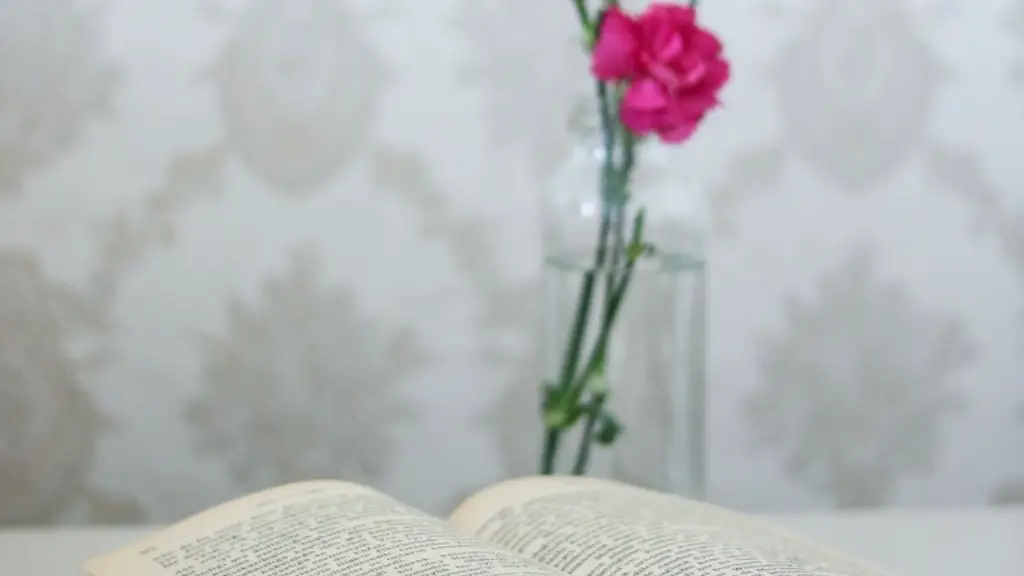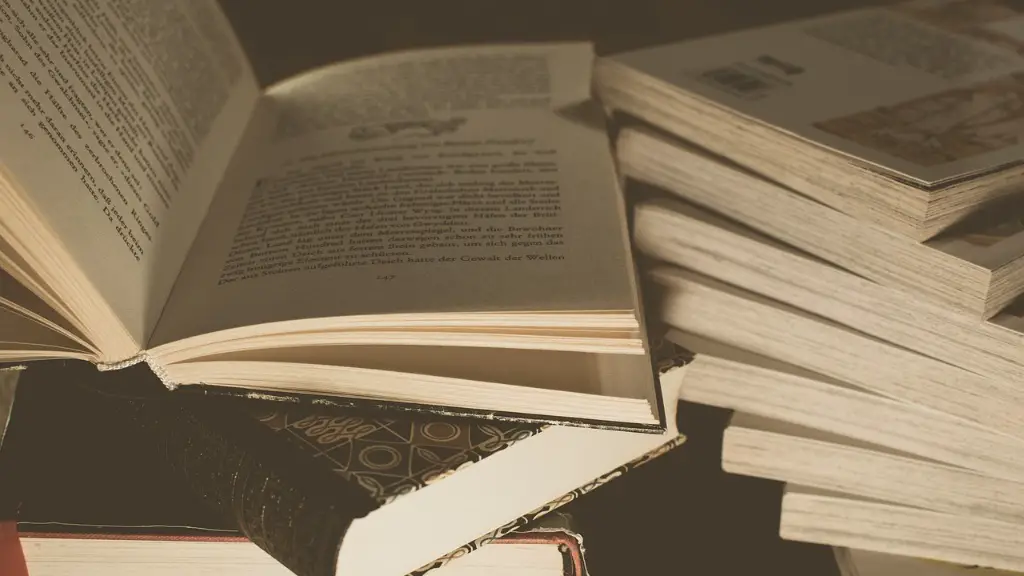Alliteration in poetry is a powerful stylistic device used to draw attention to the phrases and words surrounding it. By repeating the same initial consonant sound, alliteration calls out specific syllables and words, causing them to draw attention, evoke feelings, and create a rich tapestry of meaning. In poetry, alliteration allows authors to emphasize key phrases, evoke powerful imagery and draw readers further into the story they are telling.
Alliteration is a form of repetition that occurs when the same sound or syllable appears in consecutive words. It is commonly used in poetry, but can also be used in writing and some kinds of speech. It is an excellent tool for writers looking to create an aura of drama and emphasize certain aspects of the poem. An example of alliteration in poetry is the following line from Robert Frost’s poem “Stopping by Woods on a Snowy Evening”:
“The only other sound’s the sweep, of easy wind and downy flake.”
In this line, the repetition of the ‘s’ sound (sweep and sound’s) helps to emphasize the silence and stillness of the snowy woods. The repetition creates a sense of urgency and a ‘whooshing’ sound of the wind. Alliteration can also create a rhythm or tempo that carries the poem along. This is especially effective in longer poems, where alliteration adds an extra layer of texture and interest to the reading experience.
Alliteration is also used to create memorable phrases and evoke powerful imagery. This is especially useful in speeches and propaganda pieces where the writer is trying to convey a certain idea or message. An example of alliteration in the form of a phrase is Winston Churchill’s famous speech: “We shall fight on the beaches,” which signified determination and resilience in the face of imminent danger.
Though alliteration has been around for centuries, it is still used in modern literature and writing today. Alliteration is especially popular in advertising and marketing, where a few words repeated can have a powerful impact on potential customers. Alliteration can also be used to draw attention to a given aspect of a product or service, by repeating the same syllable or sound in quick succession. Alliteration is a versatile tool for any writer looking to emphasize a certain aspect of their writing and make it stand out from the crowd.
History of Alliteration in Poetry
Alliteration has a long and storied history in literature and poetry, with examples found in ancient texts from around the world. Alliterative verses can be found in the written works of ancient Chinese, Indian, and Greek authors, and in the oral tradition of Aboriginal peoples in the Americas. In English, alliteration has been used since Old English and Anglo-Saxon times, and is especially prominent in Old English poetry and sagas, such as Beowulf. Here, alliteration is used to evoke a sense of awe and grandeur and to link words together in a meaningful way.
In modern literature and poetry, alliteration is still used to draw attention to certain words and phrases, evoke a certain mood, or create a rhythm. Famous authors like Emily Dickinson, Robert Frost, Dr. Seuss, and Ernest Hemingway have all used alliteration to create memorable phrases, vivid imagery, and aural pleasure. Alliteration allows writers to draw attention to particular aspects of their writing, and to give readers something to hang on to in the midst of a poem.
The Role of Alliteration in Poetry
Alliteration is an important stylistic tool for any writer, especially in the craft of poetry. Besides creating emotional resonance, alliteration serves a few other purposes in poetry. It can be used to create a rhythm, set a tempo, and draw attention to certain words and phrases. It can be used to emotionally stir an audience and create vivid imagery in the mind of the reader. By evoking powerful feelings and creating aural pleasure, alliteration can take a poem to the next level.
For instance, in Michael Ryan’s poem “Being Seen”, alliteration is used throughout to create a rhythm and evoke feelings of loneliness and melancholy amidst the natural world. The repetition of ‘l’ throughout the poem calls out “the cricket’s lonely lull”, “the last light lingers”, and the “listless leaves”, to underscore the themes of solitude and fragility.
Alliteration is also used to create strong imagery in poetry. In Sharon Olds’ poem “On the Subway”, the repetition of “s” and “sh” throughout the piece helps to create a vivid atmosphere of a journey in a subway car. We’re able to feel the “shush” of the tunnels, the “sifting stillness” of the night, and the “shock of the stars’ sudden beams”. Alliteration calls out specific words and syllables, allowing us to feel and visualize the situation the poet is describing.
The Impact of Alliteration on the Reader
Alliteration can have a powerful effect on readers, evoking feelings and imagery that may not have been conveyed without it. It can draw attention to certain words or phrases and create a rhythm or tempo that carries the poem along. Alliteration can also elevate a poem to a higher level of emotion and meaning than it may have had without it.
In W.H. Auden’s poem “As I Walked Out One Evening”, alliteration helps to create a sense of suspense and suspense, as the poem builds up to its tragic ending. Auden’s repetition of the letter “h” across several lines calls out phrases like “hear the lion and the unicorn”, “The heart of the heartless world”, and “Half-forgotten, half-remembered spring” to keep the reader hanging on to the verse.
Alliteration also helps to call out certain words and phrases and make them stand out from the rest. In Ted Hughes’ poem, “Full Moon and Little Frieda” alliteration is used to emphasize key words of the poem and add an extra layer of emotion to the reader’s experience. By repeatedly calling out and emphasizing the words “moon”, “fingers”, and “fire”, Hughes is able to draw attention to these words and reinforce their meaning and importance.
Conclusion – Benefits of Using Alliteration in Poetry
Alliteration is an age-old poetic device that can be used to evoke powerful feelings and create unforgettable imagery. It is an excellent tool for writers looking to create an aura of drama and emphasize certain aspects of the poem. Alliteration can also draw attention to certain words and create a rhythm or tempo that carries the poem along. For these reasons and more, alliteration is an essential tool for any writer looking to take their writing to the next level.



